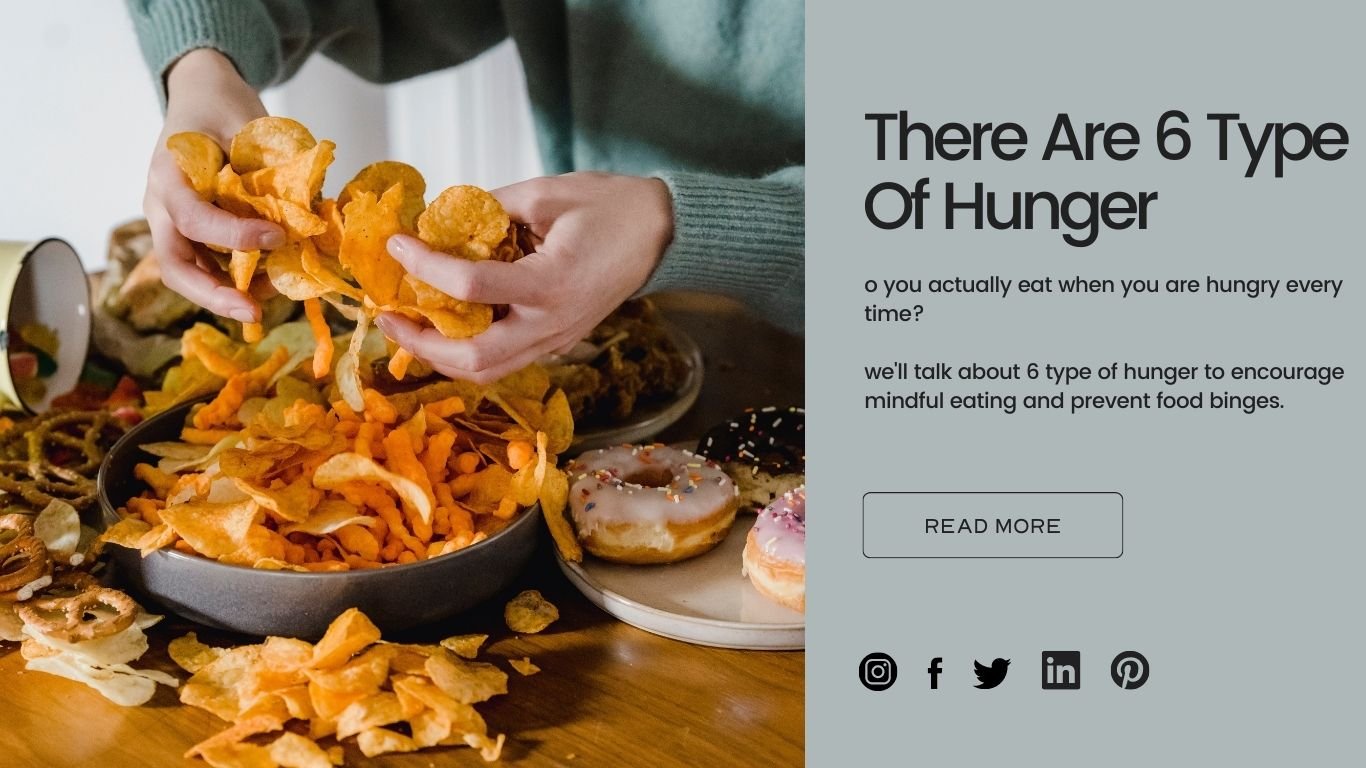Do you actually eat when you are hungry every time? Do your eating habits depend on how hungry you are? you frequently get caught in a guilt spiral after binge-eating? Then you should continue reading. Here, we’ll talk about 6 type of hunger to encourage mindful eating and prevent food binges. You can hurt your physical and mental health by eating mindlessly. And this is where the psychology of healthy eating is useful. To receive nutrition for the body, maintain metabolism, and feel wonderful all day long, it’s important recognizing food-related behaviors and managing your hunger.
6 Type of Hunger
Eye Hungriness
Eye hunger occurs when your eyes tell your brain that you’re hungry. In this instance, your eyes are the ones that are hungry, not your body. Imagine you just finished dinner and pass by that ice-cream vendor because it appears too wonderful to be true. Here, your eyes tell your brain that ice cream is enticing and that your body wants it, even when your stomach is already full. Thus, your eyes take precedence over the signals from your body, stomach, and mouth, causing you to eat unhealthy food at strange times. Instead of hurrying to consume the meal you just saw, take a moment to stop and take it all in. Be careful. Declare to your mind that you are full and that you are no longer hungry.
Nose Hunger
In this, smelling the food’s scent makes you feel hungry. For instance, even if you are not hungry, the alluring aroma of freshly baked cake may make you crave it. Food odors do, in fact, affect food preferences and the desire to eat certain foods, according to studies. Try convincing yourself that you are full and that your nose is deceiving your brain. It helps to be alert and mindful.
Mouth Hunger
When you crave food with a certain texture or flavor, you experience this type of hunger. This is primarily related to our family’s eating habits, cultural customs, upbringing, and even genetics. It could affect how sweet, sour, or spicy we like our food to be, and it could cause cravings and mindless eating. Chew your food slowly instead of swallowing it after a few nibbles. This makes it easier for you to enjoy.
Stomach Hunger
You may genuinely be hungry if you have a rumbling sensation in your stomach, as if something is gnawing away inside. Be conscious of your hunger levels when you consume meals. Every now and then, take a brief moment to consider whether you are still hungry.
Cellular Hunger
Cellular hunger is the phrase we use to describe when our body craves certain foods, such as citrus drinks, salads, starches, proteins, solids, etc. Cellular hunger is a means for our bodies to communicate to us that we are in need of certain nutrients when they are not present in the body. Since other types of hunger can readily overwhelm it, this type is more challenging to detect. Eat a nutritious, wholesome diet that is well-balanced. If necessary, use vitamins in your routine.
Heart Hunger
Heart hunger, also known as emotional eating, is frequently linked to our emotions, where we turn to particular “comfort foods” to make ourselves feel better or appreciated. According to research, people choose comfort foods to sate their emotions when they are in a bad mood (sad, anxious, or furious). Be patient, move more slowly, and take a minute to consider what your body actually needs at this moment. It may be protein, carbohydrates, rest, music, a walk, etc.




